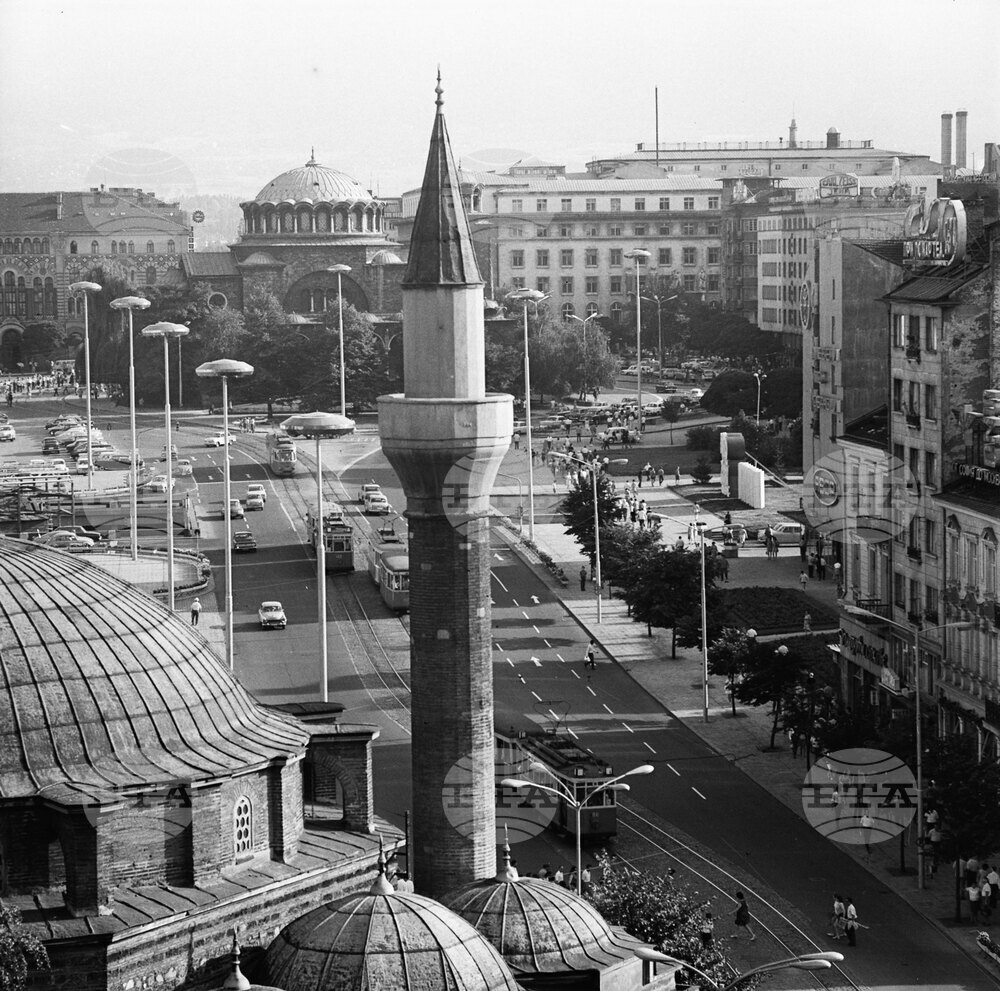site.btaMay 5, 1971: St Nedelya Orthodox Church and Banya Bashi Mosque, Sofia View from Above


Bulgaria has been a crossroads of religions and civilizations for ages. In the very centre of Sofia, stand four temples of the four leading religions, which are still actively professed today. These are the St Nedelya Orthodox Church, the St Joseph Catholic Church, the Banya Bashi Mosque, and the Sofia Synagogue, which together form the so-called Square of Tolerance.
The oldest of the four buildings is the Banya Bashi Mosque, built in the mid-16th century. It is located in the heart of the ancient Serdica Roman complex, near the hot mineral springs for which Sofia was built on this site. The mosque was part of a bigger complex featuring a big public baths building, which nowadays houses the Sofia History Museum.
Opposite the mosque, visible in the photos from 1971, is the Central Sofia Market Hall. The covered market was opened in 1911 and is still an important trade centre in the city. Next to it, just a bit to the west of the Mosque is the Sofia Synagogue. It is the largest synagogue on the Balkans and the third in Europe. Built in the early 20th century in the style of the Vienna synagogue. Part of the building was destroyed during the bombing of Sofia in World War II. The current restored synagogue is larger than the old temple and was built with shades of the Byzantine architectural tradition.
Nowadays, to the southwest of the synagogue, just a few hundred meters away, a Catholic temple stands. The church was designed before Bulgaria’s liberation but was completed in 1885. It was also affected by the bombing, so the current temple is its larger, restored version, built with the donations of Catholics from around the world. The first stone of the new structure was laid in the presence of Pope John Paul II in 2002.
Beyond the busy boulevard on which the Catholic temple stands, the domes of the St Nedelya Orthodox Church can be seen, both nowadays and in the photographs from 1971. It rises on a site where there have been Orthodox churches since the 10th century. In 1925, the church was almost completely destroyed in a bloody assassination organized by a group of far-left activists of the Military Organization of the Bulgarian Communist Party. It was rebuilt and once again inaugurated in 1933.
Visible in the photos from 1971 is the ongoing restoration work on the Church of St Petka of the Saddlers, a medieval Bulgarian Orthodox church, partially dug into the ground, in the TZUM (Central Department Store) underpass. The church was first mentioned in the 16th century. It was constructed at the place of a former Roman religious building. Nowadays, the underpass also houses the newly excavated Roman ruins of the city of Serdica. Work on uncovering and exhibiting the archeological riches of the city of Sofia is ongoing.
Also seen in the photos is the Largo, an architectural ensemble of three Socialist Classicism buildings. It was designed and built in the 1950s with the intention of becoming the city's new representative centre. The Largo complex consists of three buildings: the Council of Ministers and the TSUM department store on the north side, the National Assembly (formerly the Communist Party headquarters) with its spire on the east side, the Presidential Administration and the Balkan Hotel to the south side.
/KK/
Additional
news.modal.image.header
news.modal.image.text
news.modal.download.header
news.modal.download.text
news.modal.header
news.modal.text









